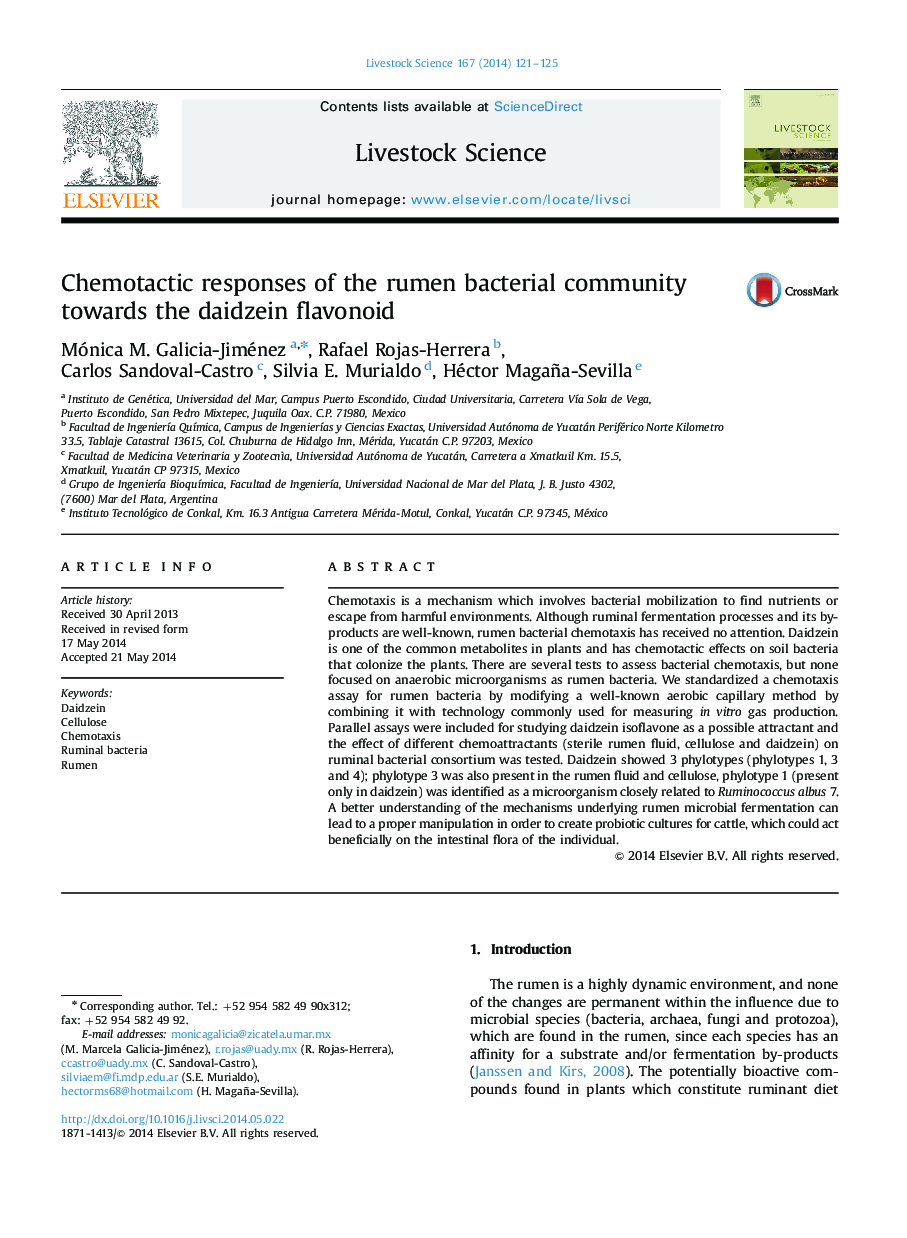| Article ID | Journal | Published Year | Pages | File Type |
|---|---|---|---|---|
| 5790083 | Livestock Science | 2014 | 5 Pages |
Abstract
Chemotaxis is a mechanism which involves bacterial mobilization to find nutrients or escape from harmful environments. Although ruminal fermentation processes and its by-products are well-known, rumen bacterial chemotaxis has received no attention. Daidzein is one of the common metabolites in plants and has chemotactic effects on soil bacteria that colonize the plants. There are several tests to assess bacterial chemotaxis, but none focused on anaerobic microorganisms as rumen bacteria. We standardized a chemotaxis assay for rumen bacteria by modifying a well-known aerobic capillary method by combining it with technology commonly used for measuring in vitro gas production. Parallel assays were included for studying daidzein isoflavone as a possible attractant and the effect of different chemoattractants (sterile rumen fluid, cellulose and daidzein) on ruminal bacterial consortium was tested. Daidzein showed 3 phylotypes (phylotypes 1, 3 and 4); phylotype 3 was also present in the rumen fluid and cellulose, phylotype 1 (present only in daidzein) was identified as a microorganism closely related to Ruminococcus albus 7. A better understanding of the mechanisms underlying rumen microbial fermentation can lead to a proper manipulation in order to create probiotic cultures for cattle, which could act beneficially on the intestinal flora of the individual.
Related Topics
Life Sciences
Agricultural and Biological Sciences
Animal Science and Zoology
Authors
Mónica M. Galicia-Jiménez, Rafael Rojas-Herrera, Carlos Sandoval-Castro, Silvia E. Murialdo, Héctor Magaña-Sevilla,
